Why We Go to the Bar for Coffee
In Italy, coffee isn’t just a drink—it’s a ritual. A daily rhythm. A social glue. From the bustling back streets of Barivecchia to its sleepy Salento towns, if you want to understand Italian life, there’s no better place to start than at the bar.
Coffee at the Bar
First things first: in Italy, a “bar” isn’t necessarily where you go for a Negroni or an Aperol Spritz (although you can often get those too). It’s where Italians go for their morning caffè, their mid-morning break, their post-lunch pick-me-up, and sometimes even a late afternoon recharge. The bar is a cornerstone of Italian social life—equal parts café, pit stop, and community hub.
Most Italians don’t linger long. They stand at the counter, exchange a few words with the barista, down their coffee in a couple of sips, and move on. It’s fast, casual, and surprisingly intimate—your barista may remember how you take your coffee before they remember your name.
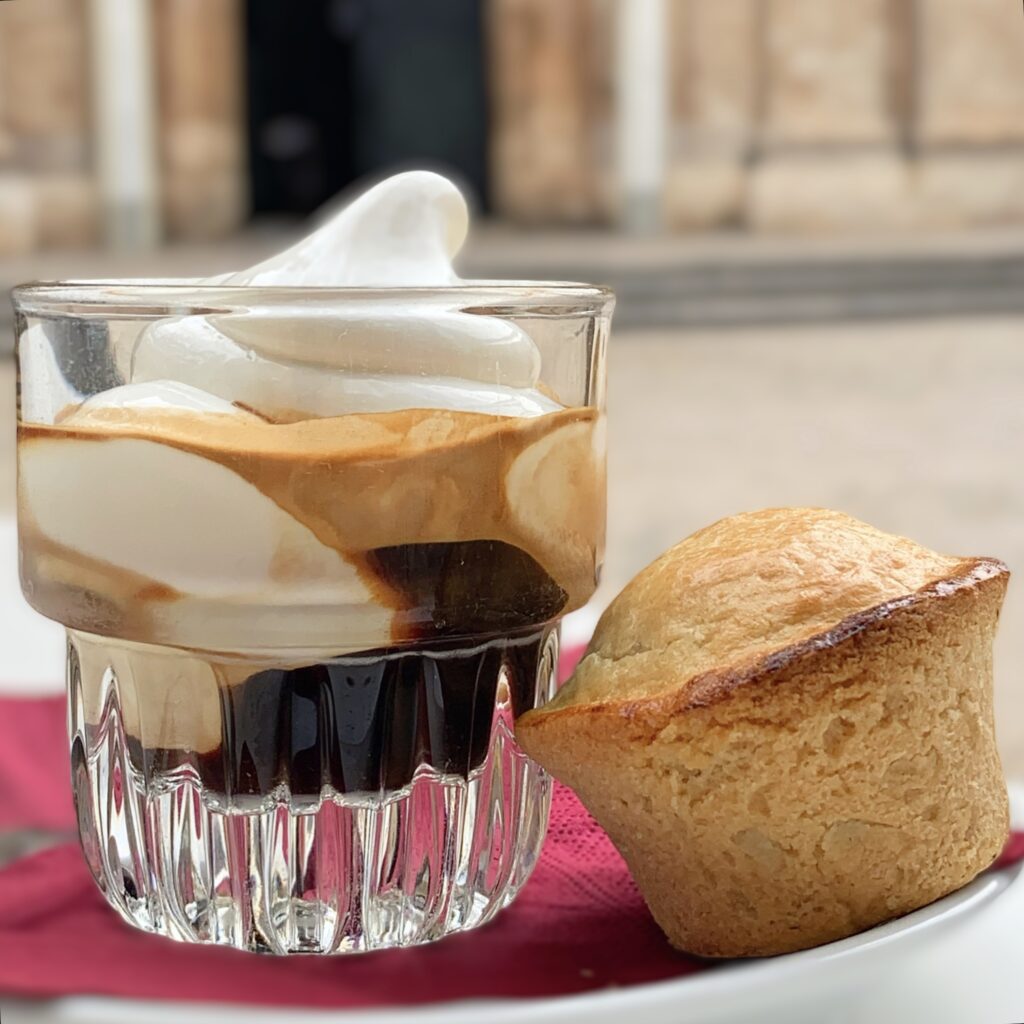
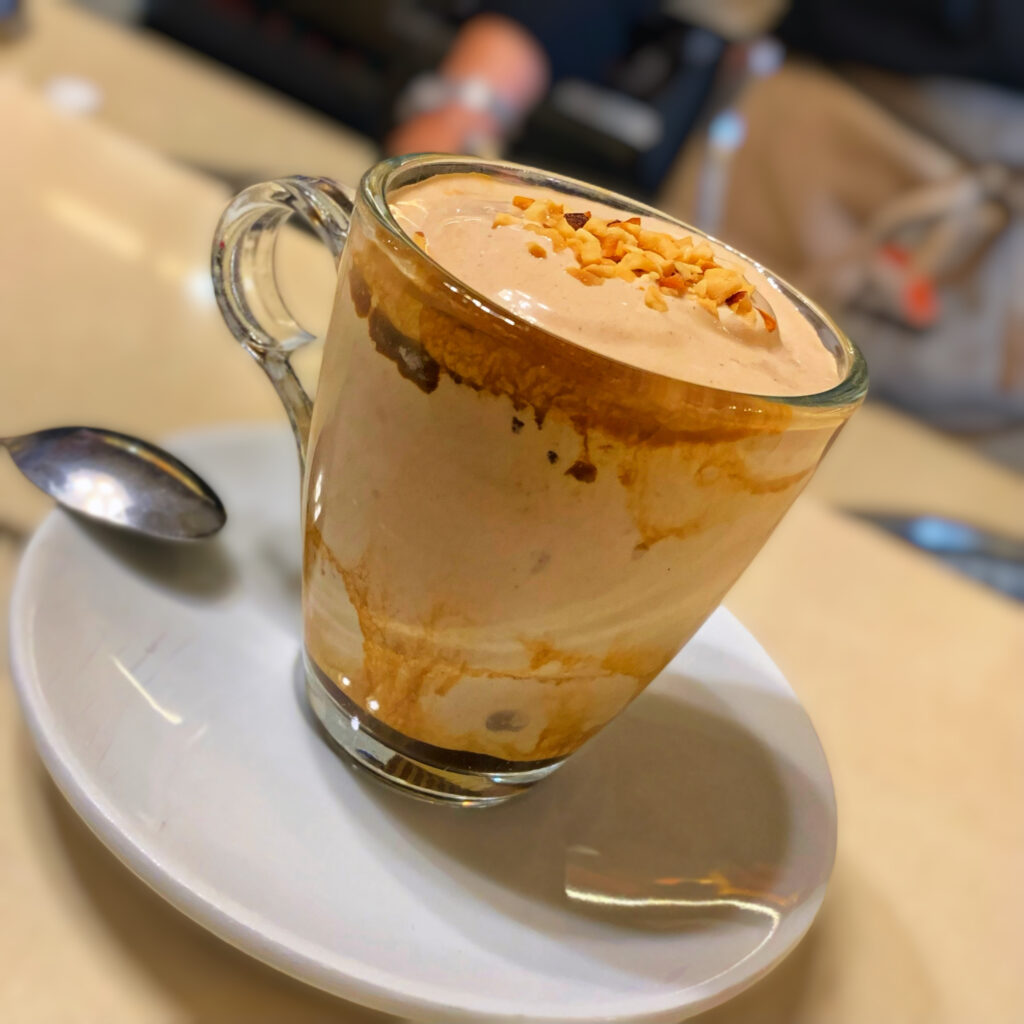
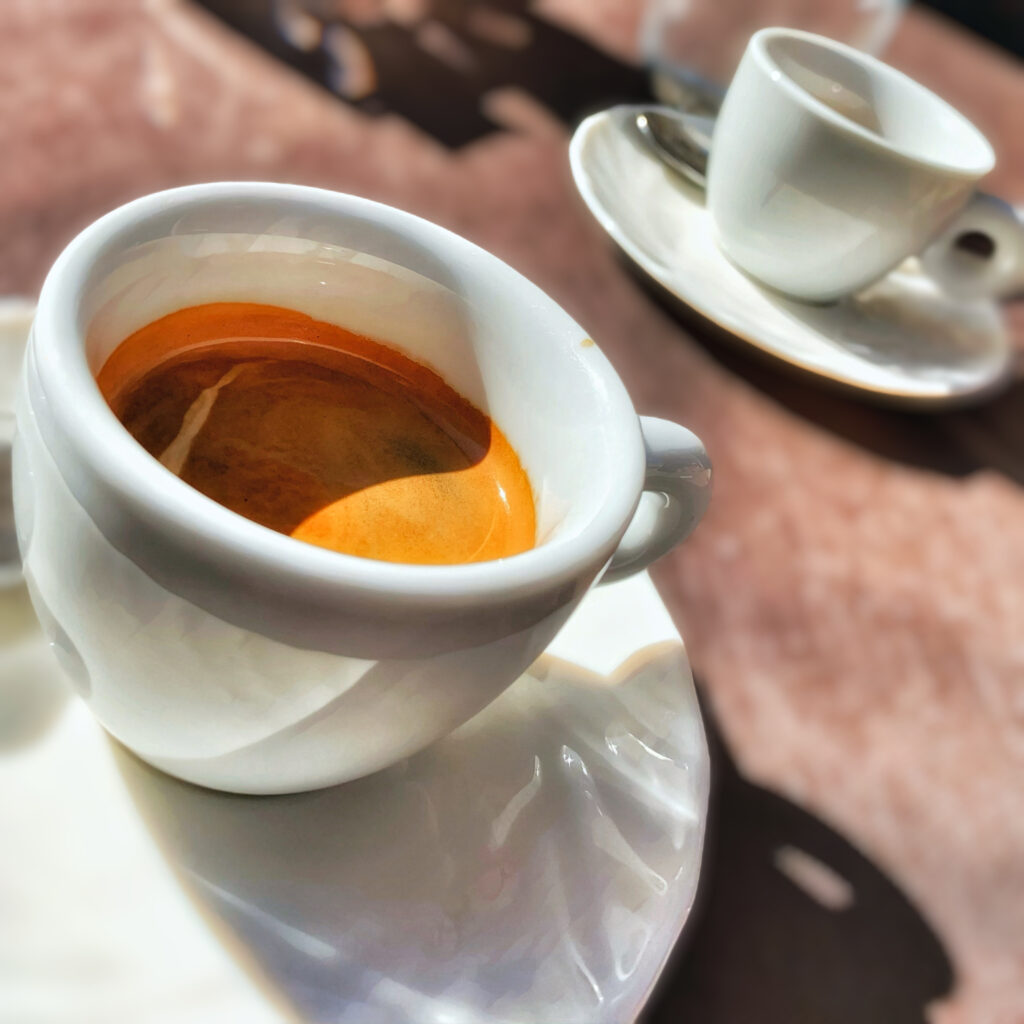
Don’t expect to find a caramel macchiato or a pumpkin spice latte. Italian coffee menus are simple, refined, and focused on tradition. Here are some staples worth trying:
- Caffè – A single shot of espresso. Order a caffè and this is what you’ll get.
- Caffè doppio – A double shot of espresso.
- Caffè macchiato – Espresso “stained” with a splash of milk. Great if you want something a little softer than straight espresso.
- Cappuccino – A morning classic: espresso with steamed milk and milk foam. Only drink it before 11am if you want to blend in—milk-based coffees after lunch are seen as heavy on the stomach.
- Caffè latte – Not to be confused with the global chain version, this is simply hot milk with a shot of espresso. Say “latte” alone, and you’ll just get a glass of milk.
- Caffè corretto – A shot of espresso “corrected” with a splash of liquor, usually grappa or sambuca. A favourite in the colder months or after a long lunch.
- Caffè shakerato – In summer, try this refreshing treat: espresso shaken over ice with sugar, often served in a martini glass.
- Marocchino – A small indulgence: espresso with a touch of cocoa powder and foamed milk, typically served in a glass cup.
If you’re ordering a cappuccino, it’s important to note that in Italy, it’s generally only consumed in the morning. In fact, many Italians believe that drinking milk after midday is bad for digestion. So, if you’re looking to blend in with the locals, stick to espresso or macchiato in the afternoon.
Another thing to keep in mind when ordering coffee in Italy is that it’s common to pay extra if you sit down at a table rather than standing at the bar. In Puglia it is only a few cents more. At our favorite Ostuni haunt a caffè costs €1,20 if ordered at the bar compared to €1,50 at the table. If you’re in a rush, or just want to rub shoulders with locals, opt for the bar experience.
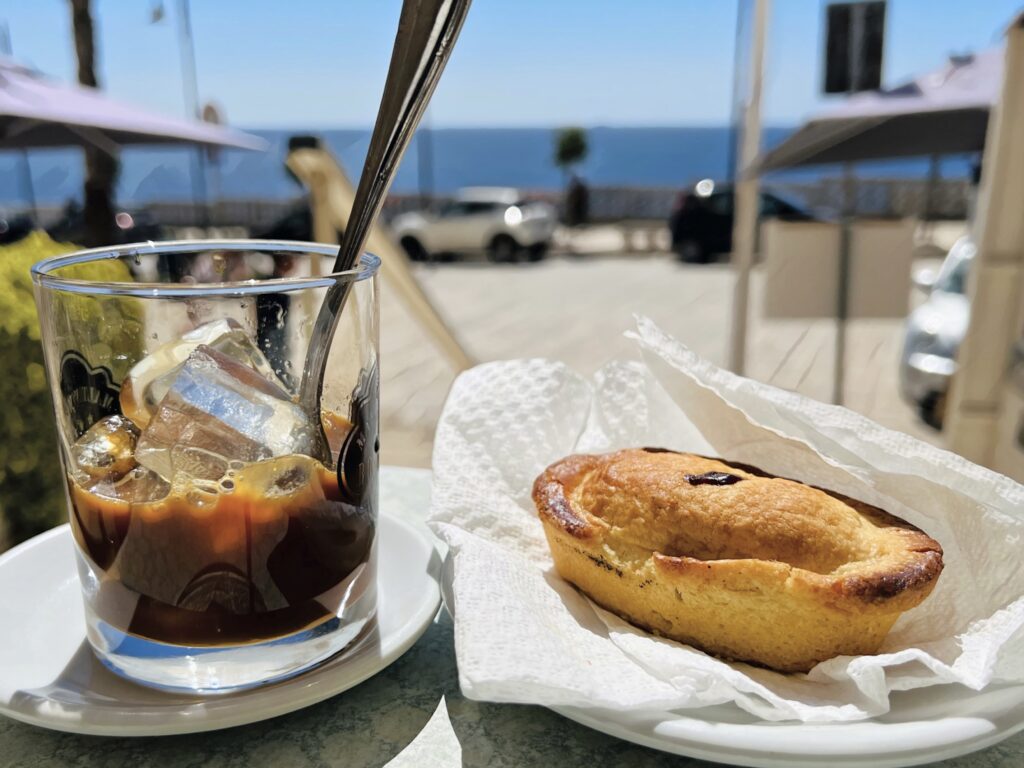
Puglia’s Local Coffee Specialities
Puglia adds its own delicious twists to Italy’s traditional coffee scene. Don’t leave without trying these regional favourites:
- Caffè al ginseng – A sweet, nutty coffee made with a ginseng-based blend. Creamier and lighter than espresso, it’s often chosen as a caffeine alternative. Available in most bars, sometimes even as a decaffeinated option.
- Caffè Leccese – A refreshing summer drink from Lecce made with espresso and latte di mandorla (sweet almond milk), served over ice. Rich, aromatic, and perfect for hot mornings.
- Caffè Speciale (Polignano a Mare) – A warm and indulgent invention by Mario Campanella at Il Super Mago del Gelo in Polignano. Combines espresso, sugar, cream, lemon zest, and homemade amaretto. Served at Piazza Garibaldi, 22, just outside the historic centre. A sip of history with a view.
- Crema caffè – A smooth, icy coffee cream popular in summer, constantly blended to keep it velvety and free of ice crystals. Served cold, often with a topping of whipped cream (panna). Similar in texture to a frappuccino, but authentically Italian.
- Espressino – A Puglian staple: equal parts espresso and steamed milk, usually served in a small glass and topped with a dusting of cocoa. A creamy, indulgent option often enjoyed mid-morning.
- Espressino freddo – A chilled version of the espressino, served cold in summer. Prepared in advance and stored in the fridge, it’s thick and dessert-like—somewhere between coffee and gelato.
Tips for Ordering Coffee in Italy
Ordering coffee in Italy doesn’t require fluency, but a little know-how goes a long way:
- Don’t ask for “latte” – You’ll get a glass of milk. Ask for caffè latte if you want coffee with milk.
- Watch before you order – Some bars ask you to pay at the till before ordering; others expect you to pay after. If in doubt, observe the locals.
- Standing vs sitting – Prices are lower if you stand at the bar, but not dramatically so. In Puglia especially, sitting at a table won’t cost much more and might come with a sea breeze or a sunny view.
- No takeaway – Italians usually drink their coffee on the spot. Few places offer paper cups, and takeaway culture hasn’t really taken hold.
- Milk after meals is unusual – Cappuccinos after 11am will mark you as a tourist. Try a macchiato or caffè instead.
Coffee as Culture
In Italy, and particularly in Puglia, coffee isn’t about speed or convenience—it’s about connection. It’s woven into the rhythms of everyday life. Whether you’re enjoying a caffè leccese at the counter of a Lecce bar, or an espressino freddo at a seaside table in Monopoli, it’s a moment of pause, pleasure, and presence.
Take the time. Order something new. And don’t forget to say grazie.
Breakfast Al Bar
In Puglia a typical breakfast at a bar usually consists of an espresso, cappuccino, or latte, and a pastry; usually a pasticciotto or cornetto.
Pasticciotti are traditional, oval-shaped pastries filled with a creamy custard-like filling made from eggs, milk, sugar, and sometimes almond paste. They also come filled with pistachio crema, amarena, jam or Nutella. The cornetto is similar to a croissant, but typically sweeter and lighter in texture. Cornetti are served vuoto (empty, without filling) or can be filled with a variety of different fillings, such as Nutella, jam, or pastry cream.
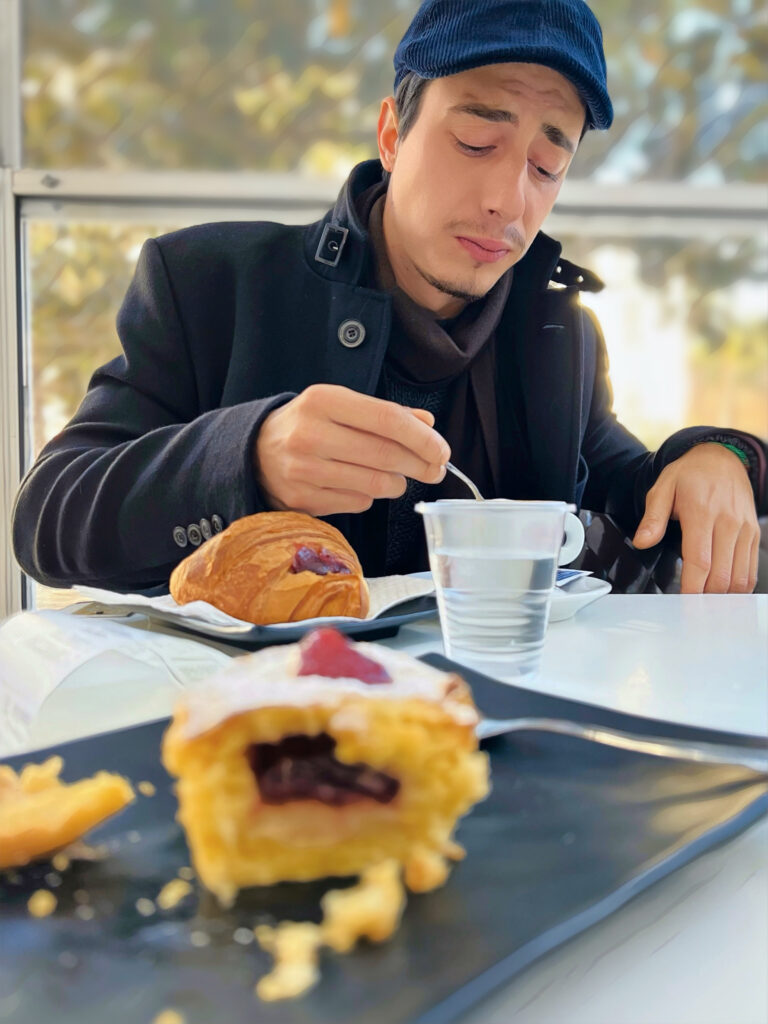
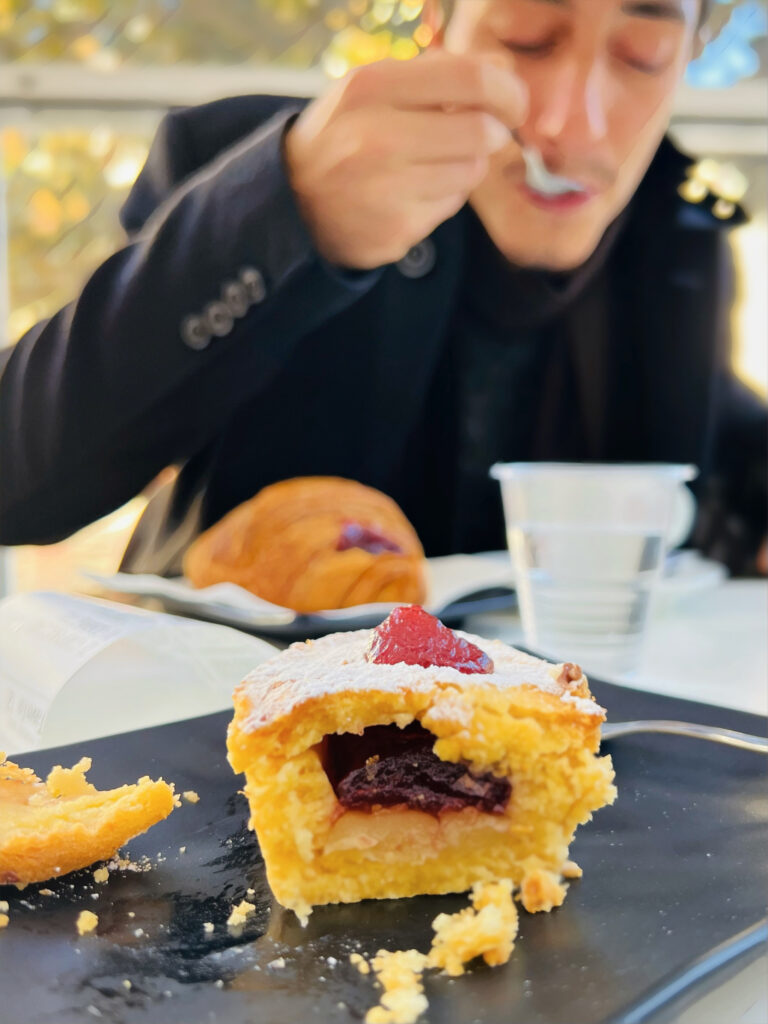
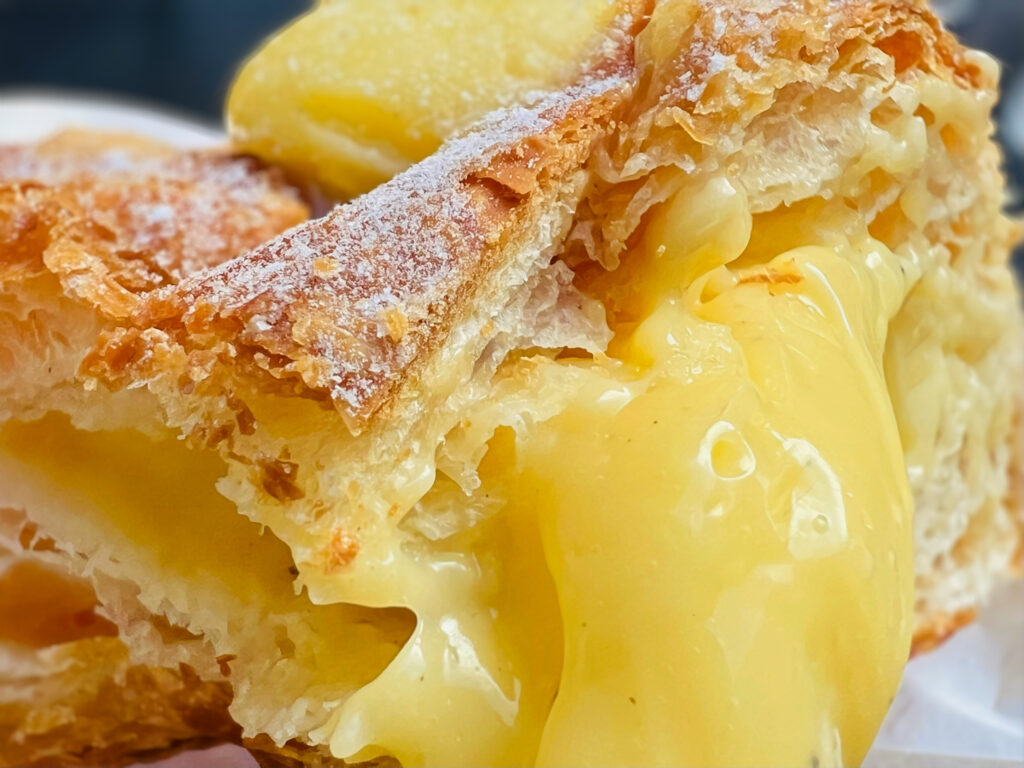
For something savory, try a rustico. This is a type of fried or baked turnover, typically filled with mozzarella cheese, tomato sauce, and bechamel sauce. You might find it with other ingredients such as chopped meat, onions, and peas.
Rustico pastry dough is made with flour, water, white wine, and olive oil, giving it a crispy and flaky texture. It is often shaped into a half-moon, a round or square shape and is sometimes sprinkled with sesame seeds or poppy seeds.
Vorrei (I would like)…
Here are some key words and phrases in Italian to use when ordering coffee at a bar in Italy:
- Un caffè: a coffee (espresso)
- Un caffè macchiato: an espresso with a small amount of milk
- Un caffè lungo: a long espresso
- Un cappuccino: a cappuccino (espresso with frothed milk)
- Un caffè latte: a coffee with milk (similar to a latte)
- Un caffè corretto: an espresso with a shot of liquor
- Un caffè shakerato: a shaken espresso with ice and sugar
- Un caffè freddo: a cold coffee
- Zucchero: sugar
- Senza zucchero: without sugar
- Caldo: hot
- Freddo: cold
- Al banco: at the counter (for standing at the bar)
- Al tavolo: at the table (for sitting at a table)
It’s also polite to use “per favore” (please) and “grazie” (thank you) when ordering. For example, “Un cappuccino per favore” (A cappuccino, please) and “Grazie” (Thank you) when receiving your order.
Perfect pronunciation
Here’s the pronunciation guide for the Italian phrases:
- Posso avere un caffè, per favore? (Poh-soh ah-veh-reh oon kah-feh, pehr fah-voh-reh?)
- Quanto costa? (Kwahn-toh koh-stah?)
- Vorrei un pasticciotto con crema, per favore. (Voh-reh-ee oon pah-stee-chee-oh-ttoh kohn kreh-mah, pehr fah-voh-reh.)
Some tips for pronunciation:
- In Italian, every letter is pronounced, so make sure to pronounce each syllable of the words.
- The stress in Italian words is usually on the second-to-last syllable. For example, “caffè” is pronounced “kah-feh” with the stress on the first syllable.
- The double consonants, such as “tt” in “pasticciotto,” are pronounced with a slight pause between them. So in “pasticciotto,” you would say “pah-stee-chee-oh-ttoh” with a slight pause between the “t” sounds.
Visiting Puglia is a coffee lover’s dream come true. Whether you’re a fan of classic espresso or looking to try something new, there’s no shortage of options. So, grab a spot at the bar, order a caffè, and immerse yourself in the art of coffee drinking in Puglia.
More | Puglia by Food, our guide to Puglia’s traditional dishes and what to eat as you travel through Puglia.
On Bari’s assassin’s trail, spaghetti all’assassina Bari’s must-eat burnt spaghetti dish:

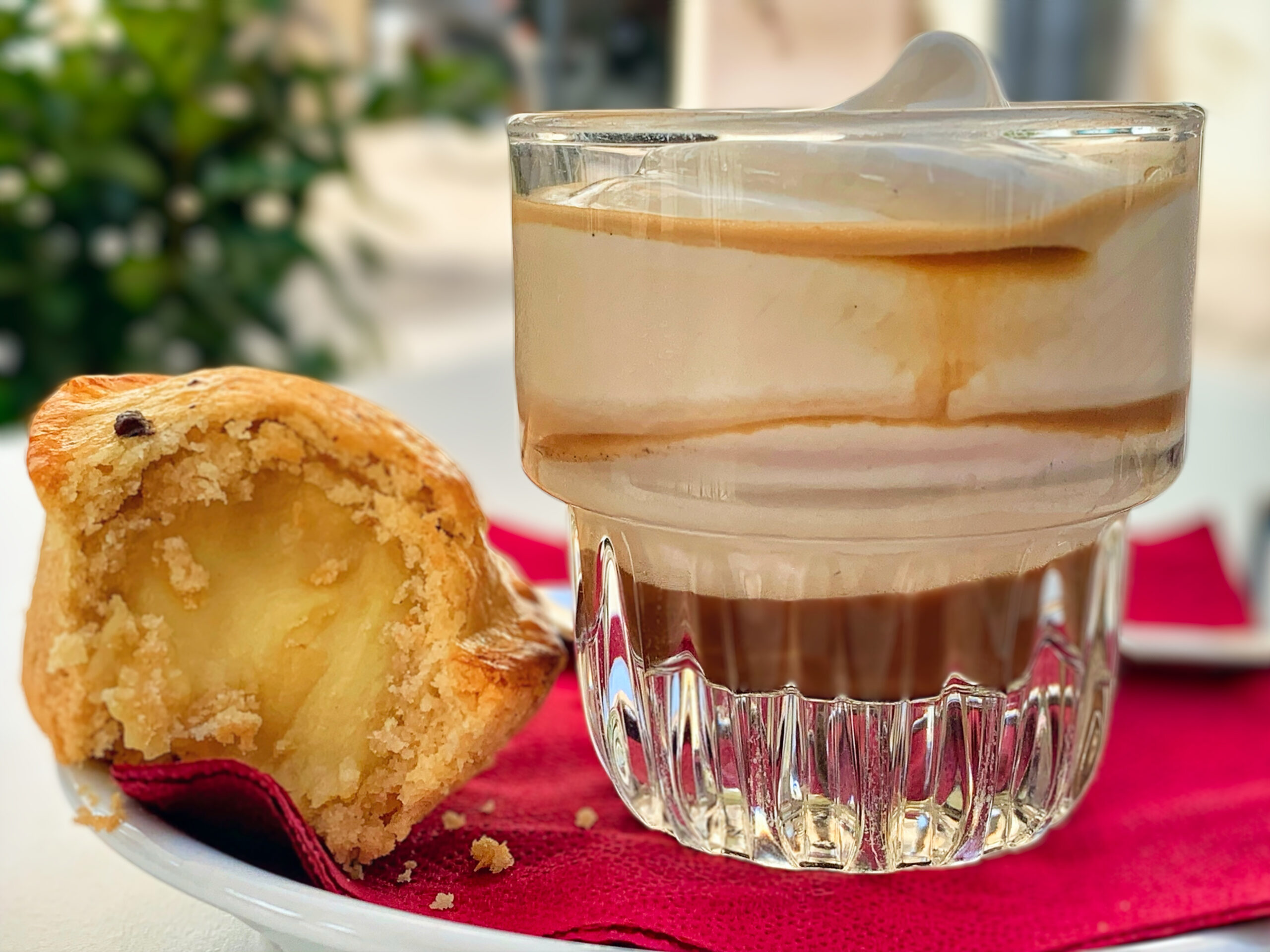

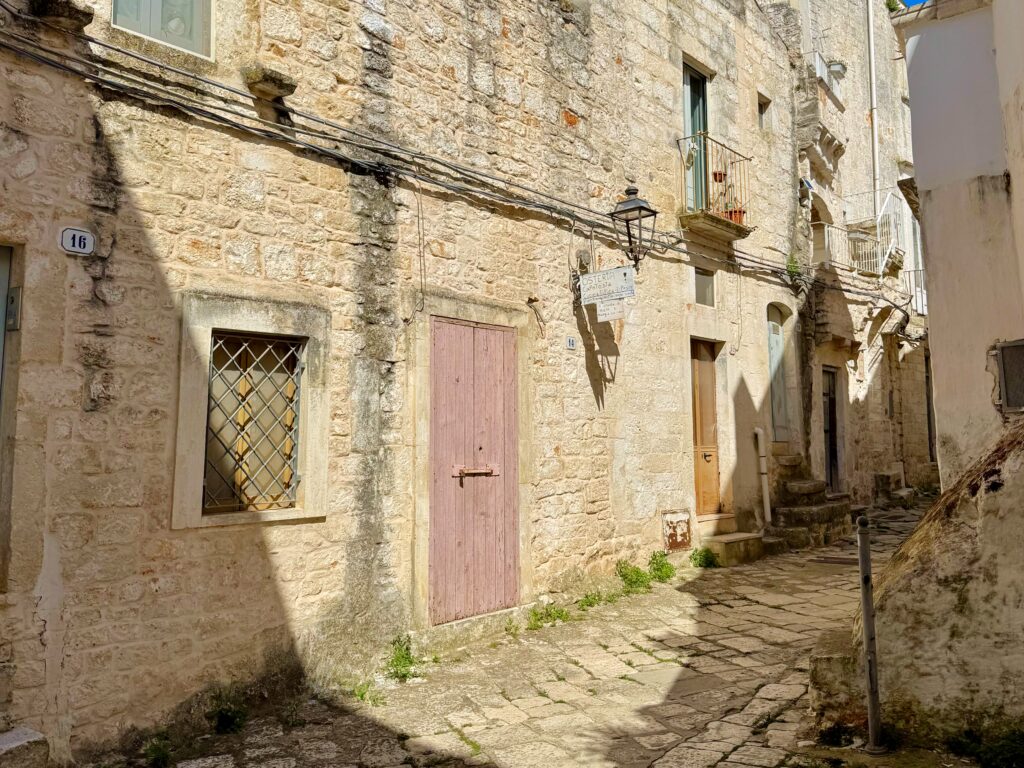

3 Comments